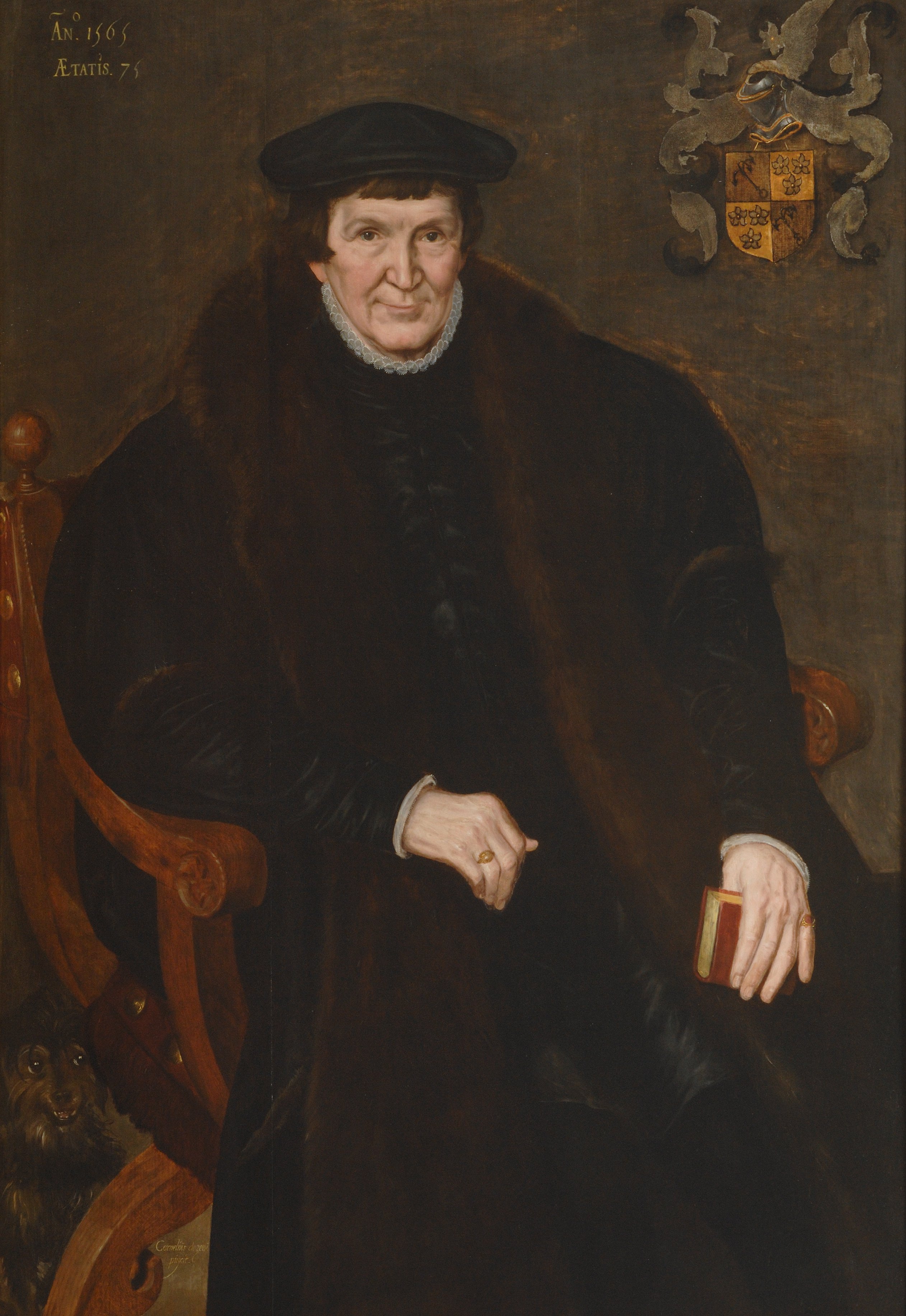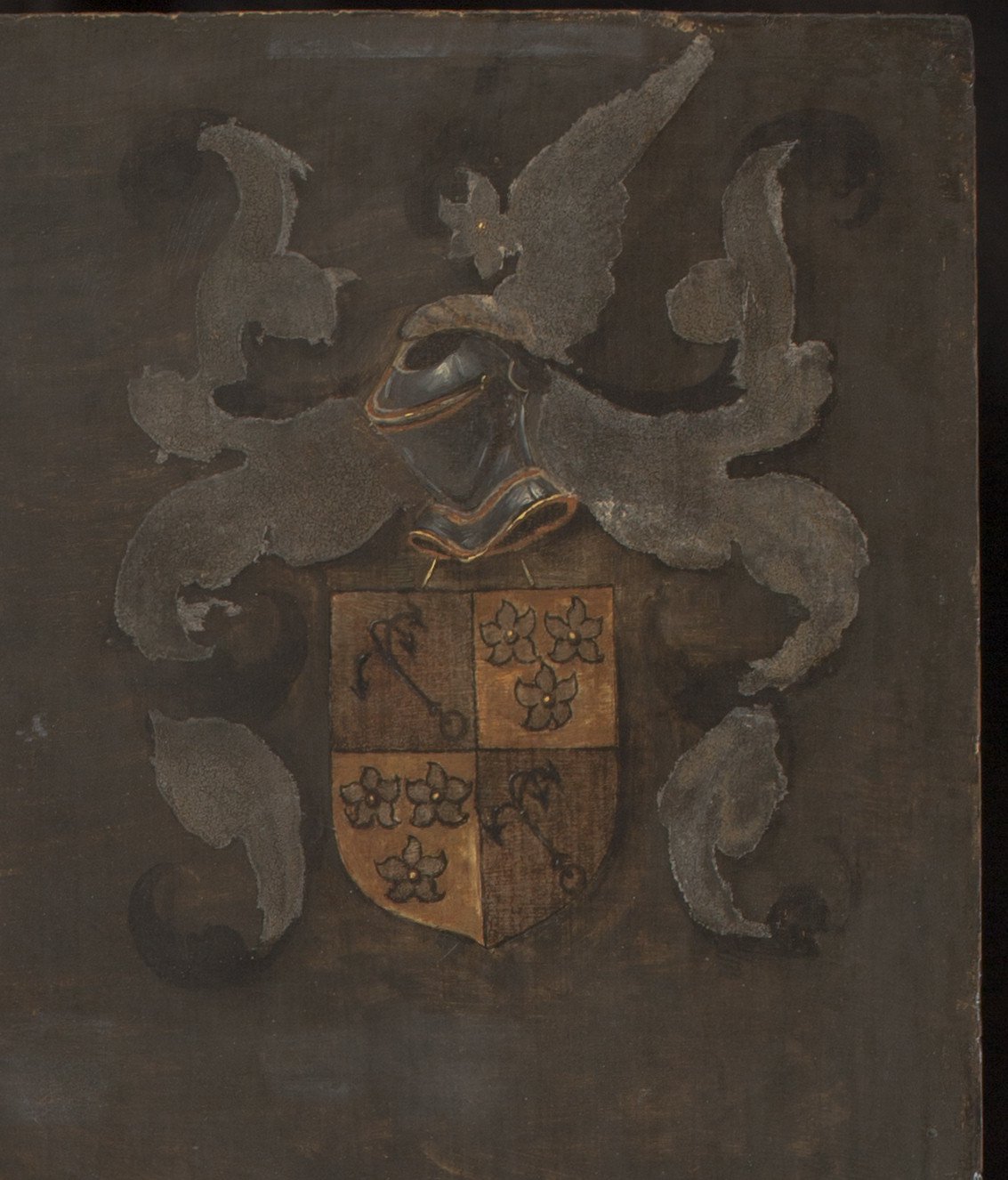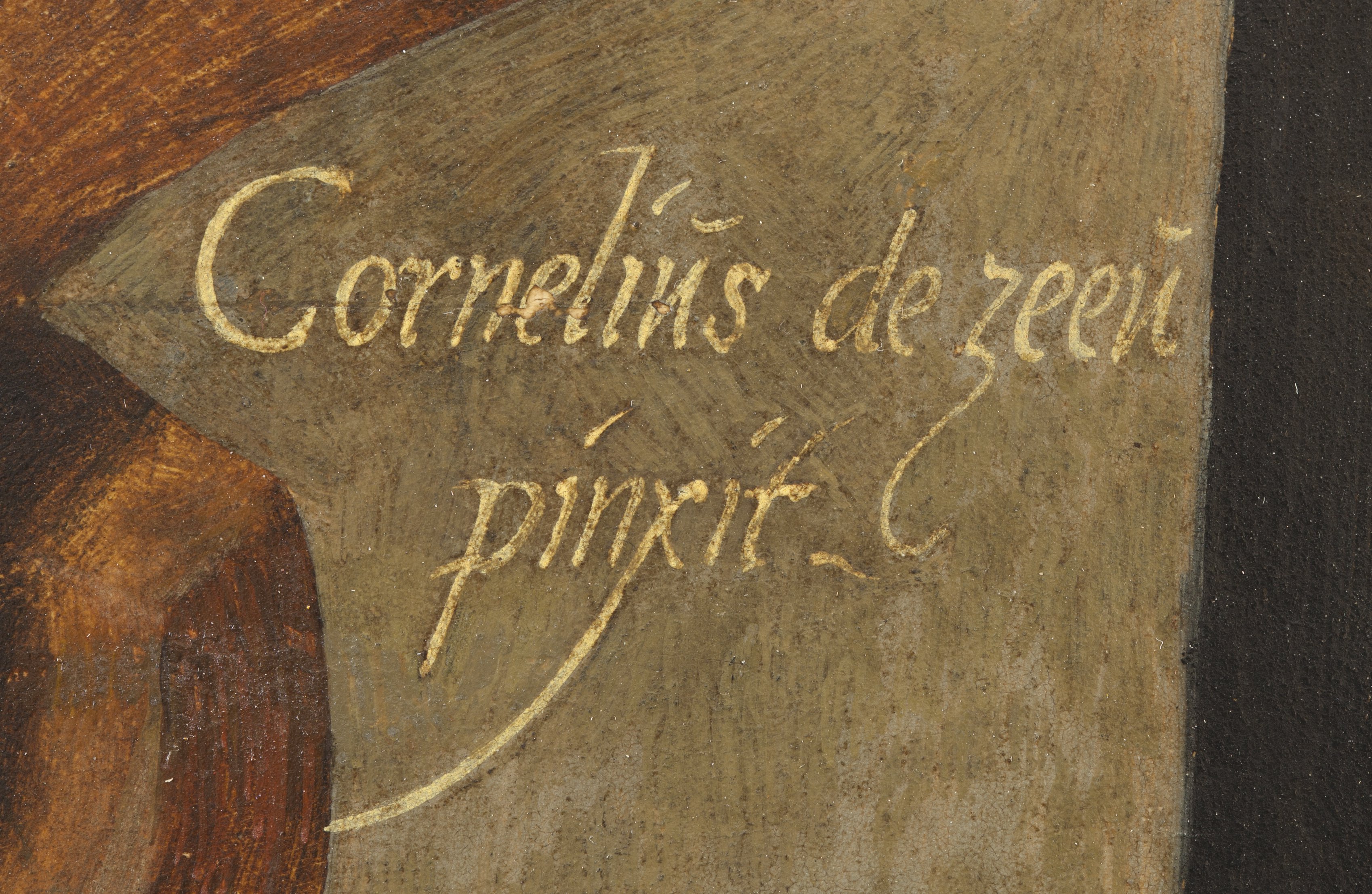26. A Portrait of Unknown Gentleman, by Cornelis de Zeeuw
 A Portrait of Unknown Gentleman, by Cornelis de Zeeuw, oil and metal leaf on oak, H 113 x W 81.3 cm
A Portrait of Unknown Gentleman, by Cornelis de Zeeuw, oil and metal leaf on oak, H 113 x W 81.3 cm
 Detail of the coat of arms
Detail of the coat of arms
 Detail of the signature
Detail of the signature
The identity of both the sitter and the painter of
this picture is a bit of a mystery, and, apart from being an impressive example
of sixteenth-century portraiture, it may serve as a good example of the ongoing
research on our collection.
This lovely sixteenth-century portrait is first
recorded as belonging to the college in the 1748 catalogue, and in the 1767
catalogue is identified in an attached note by President
Fry
as a portrait of Sir
William Cordell, Solicitor General for Mary Tudor in
1553-7, Speaker of the House of Commons in 1558, Master of the Rolls, and the
college’s Visitor between 1566 and his death in 1581. The origin of the
identification and the provenance of the portrait are uncertain, though one
wonders whether there is some connection with the decision taken at about the
same date to bind in one volume a considerable collection of Cordell’s letters
to the college.[1]
Cordell is an interesting figure, with his page both in this college’s and in
Tudor England’s history, and we periodically get requests to reproduce this portrait
as a depiction of him, but unfortunately the identification cannot stand, and
was dismissed already by Rachael Lane Poole in her 1926 catalogue of Oxford
portraits. The gentleman in the portrait looks nothing like the portraits of
Cordell in his own house, Melford Hall in Suffolk (perhaps the weakest argument
as the dress in the Melford Hall portrait is sometimes supposed to be at least
half a century too late for Cordell).[2] The crest of arms in the
upper right corner looks nothing like the Cordell arms.[3] Most importantly, the age
of the sitter does not fit. The inscription in the top left corner says ‘an(n)o
1565, aetatis 75’ (in the year 1565, aged 75), which puts his birth in 1490.
This is far too early for Cordell, who was born sometime about 1522-4, based on
the known facts of his career.[4]
The key to the sitter’s identity must be in the coat
of arms, but this seems to have suffered some changes in colour, and is now
difficult to identify with certain. Ruth Bubb, who expertly restored this
painting for us in 2016, has identified two possible eighteenth century coats
of arms showing some of the same element: one belonged to Dr Gibson of Hatton
Garden, London in 1716, and the other is associated with the names of Mager or
Major in Southampton, and Mayor in Rugby, but neither fits exactly. There is a
possibility that the portrait is not of an Englishman at all, but was brought
from the Netherlands.
We fare better with the painter, but again much
remains to be discovered. The picture is signed ‘Cornelius de Zeeu pinxit’.
While nothing further is known about the personality of the painter (and ‘de
Zeeu’ or ‘de Zeeuw’ might be simply a geographical designation, ‘from Zealand’
in the Netherlands), a number of portraits either signed by him or identifiably
by the same hand, all from the 1560/1570s, are known, most
notably at
the Rijksmuseum in Amsterdam and the Alte Pinakothek
in Munich.[5] A lovely portrait of a
young man belonging to the same year as the portrait in our collection can
be seen at the Bristol Museum, and another was
recorded in a private collection in Richmond back in 1968. Interestingly,
infrared reflectography done for us by TSR Imaging in 2016, shows, as they have
pointed out to us, the techniques to be consistent with those used by
Netherlandish painters (including those who moved from Antwerp to work in
London, as de Zeeuw may have done) and different from those used in the
workshops of native English artists. There is an underdrawing in dry medium,
most likely in black chalk, but it is followed very loosely. Reserves are left
for the face and the hands, and some of the important elements of the painting,
for example the small dog and the book in the sitter’s left hand, have been
added at the painting stage without previous sketching.
Many threads for us to pursue further, in
collaboration with other collections, but in the meanwhile we may all enjoy
this sympathetic portrayal of a shrewd old man, and try to fill the gaps in
what we know about him or about the painter in our own imagination.
View the painting on Art UK here.
[1] W.H. Stevenson and H.E. Salter, The Early History of St John’s College, Oxford (Oxford 1939), 479-501.
[2] Discussed in a splendid article by Edward Town, ‘Pirates, brewers and merchants’, National Trust Historic Houses and Collections Annual 2013, 20-25.
[3] W. Hervy, The Visitation of Suffolk, 1561, ed. by J. Corder, vol. 1 (London 1981), 28-9, gives fullest detail on the Cordell arms.
[4] P.W. Hassler, The House of Commons, 1558-1603, vol. 1 (London 1981), 657, gives ca. 1522. The date of ca. 1524 on the History of Parliament website, and the firm date of 1522 in Oxford DNB do not seem to be based on any new evidence.
[5] See P.J.J. Van Thiel (ed.), All the Paintings of the Rijksmuseum in Amsterdam (Amsterdam 1976), 620.
 Dr Georgy Kantor, Tutorial Fellow in Ancient History and Keeper of the Pictures
Dr Georgy Kantor, Tutorial Fellow in Ancient History and Keeper of the Pictures